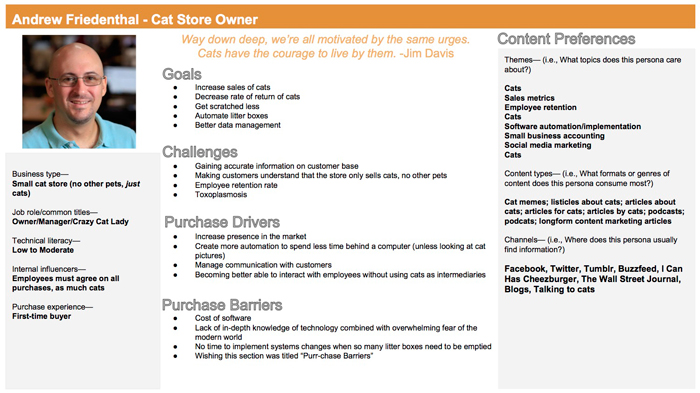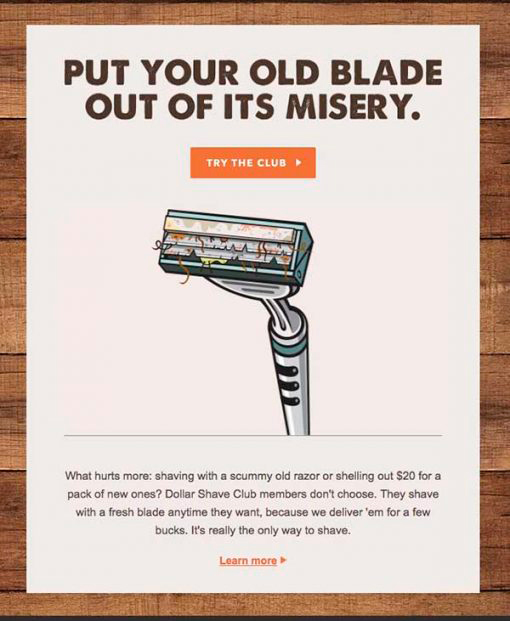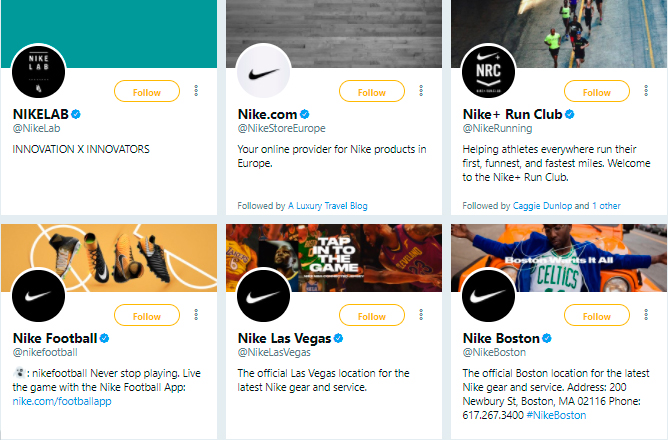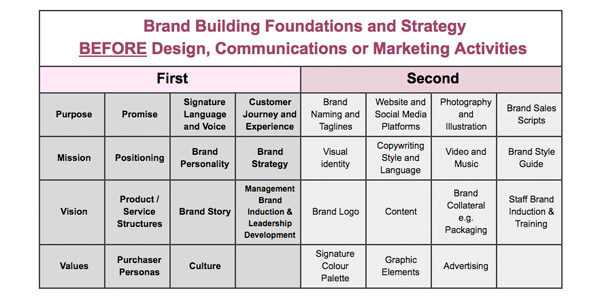Using Buyer Personas to Increase Your Business Profitability
/0 Comments/in Buyer Personas /by Lorraine CarterIncrease Sales Using Buyer Personas: Your Guide to Understanding and Targeting Your Ideal Customers
/0 Comments/in Buyer Personas /by Lorraine CarterBuyer Personas or Purchaser Personas is a tool used to identify and understand each of your different customer types so you can create a really attractive brand proposition to solve their problems and enhance their lives—and most importantly increase your sales.
Every business, large or small, aims to truly engage their ideal audience to sell effectively so having a really clear picture of your various Buyer Personas or Purchaser Personas is critical in assisting you to achieve that goal to maximise engagement and increase profits.
Here we explore Buyer Personas and their impact on your brand strategy and marketing activities to deepen market penetration and increase sales.
What is a Buyer Persona?
A Buyer Persona or Purchaser Persona is a detailed profile of your ideal customer. Buyer Personas are used to identify new opportunities and tailor products, branding and marketing messages to your customer specific needs—rationally and emotionally. Buyer Personas help you envision your customers, peek into their minds, understand their needs and wants and create solutions with targeted messages that evoke a strong response.
The reason why a Buyer Persona has such an important role in branding and marketing is that it enables you to meet and potentially exceed customer expectations. And in the world where customers have access to myriads of brands and competition is stifling, satisfying customer expectations and experience are the key ingredients to the success of a business.
Related: Top 10 Brands for Customer Experience and What You Can Learn From Them
If you’d like to discover more valuable and detailed information about your customers and create Buyer Personas that underpin and inform your business decisions, enquire about our highly effective Brand Audit service. We empower companies and brands across a broad range of sectors in various jurisdictions and countries to develop strong brand identities so their brand is the preferred customer preference in all buying decisions—and they increase sales.
On the other hand, if you’d like to conduct a DIY brand audit yourself then our Auditing Analysis Accelerator™ Programme is the perfect solution for you because it’s a simple step-by-step process enabling you to identify areas of brand strength and weakness together with opportunities for innovation to grow your business.
The Buyer Personas and a Job to Be Done
Even though Buyer Personas have a crucial impact on business’s bottom line, assigning too much value to Buyer Personas can backfire too. As Harvard Business Review [1] puts it, collecting and deciphering customer data is an essential necessity, but data doesn’t reveal all the information about your customers because, as Nobel Prize-winning research in neuroscience and behaviour proves, all humans regardless of gender or cultural background, are emotional and irrational creatures so consequently somewhat unpredictable.
You might know your customers’ behaviour patterns all too well, and yet misunderstand why they buy your product. This problem is caused by the correlations that marketers create when they analyze buyer data. For example, if you created a Buyer Persona of a young 25-year old man, who likes to watch documentaries, plays the guitar, spends his free time in bars and clubs, and buys the Rolling Stones because it reinforces his image of a rebel, you will be tempted to assign the same reason for buying the magazine to all the 25-year old men who lead the same lifestyle.
Related: Design Is NOT Branding: 10 Things Every Business Owner and Entrepreneur Should Know
People buy brands, service or product, for different reasons. They might buy it because they work for a music industry, or because their girlfriend likes music. By putting every person under the label of one defined Buyer Persona, marketers fail to understand the real reasons people buy products or services.
This, in turn, affects the effectiveness of brand strategy, brand collateral, marketing communications, messaging and sales numbers. A business, depending on its size and the nature of its product offering, can anything between two to twenty different Purchaser Persona types so it’s critically important to avoid making this common error of dumping all your customers into one buyer profile type.
It’s essential to understand that branding is NOT marketing or design but the bedrock strategy supporting and directing your whole business so your brand strategy is fundamental to your business’s sales increase, longevity and ongoing profit growth.
Another confusion around Buyer Persona stems from the fact that Buyer Personas are often used differently in Branding and Marketing. Buyer Personas were created for marketers to get deeper insights into an audience to help them craft impactful messages. Brand building, on the other hand, imposes its variables too.
Building the bedrock brand strategy supporting and directing your whole business to ensure its continued growth and sustained longevity may not be your top skill set so if you’d like professional branding input to grow your business faster then get in touch. Alternatively book one of our transformational workshops, brand building intensives or masterclasses.
In fact, we have the perfect solution for you, three different ways of working with us to build your personal and corporate brand, depending on your preferences — so if you want us to:
- Build your brand for you – find out more here or get in touch [email protected] or ring +353 1 8322724
- Empower you to build your brand – check out the Persona Brand Building Blueprint™ Mastermind here. This is a two-day intensive where you work on your brand with us codifying and mapping out your brand strategy for business growth. Alternatively, join our half-day Branding Accelerator Masterclass for a fast-injection of brand building essentials. We also have a dedicated Personal Brand & Corporate Brand Alignment Masterclass
- Want a DIY solution? Check out our how to build a brand eprogramme here because it empowers you to build your brand yourself so you become No.1 in your market and increase your profits
The Persona Brand Building Blueprint™ Mastermind empowers you to build your brand strategy, raise the visibility of your brand, reduce customer acquisition costs, increase sales and position your brand as the №1 choice for your customers.

Build your standout brand at the Persona Brand Building Blueprint™ Mastermind with Lorraine Carter
Understanding your customers is a crucial component of successful branding, but brands should be judicious in how they align their messages with customer expectations. Take the case of Apple, for example. When Steve Jobs launched the brand he sensed the need for novelty and design-driven technological experiences. However, only a small percentage of customers were able to articulate that need.
Related: Use Psychology in Your Brand Strategy to Create Irresistible Brand Experiences and Increase Sales
In contrast, using specific brand-aligned customer emotions (namely delight, connection, surprise and love identified through customer research and profiling), as a beacon to guide their strategy coupled with the brand’s personality and what it stands for, has underpinned Apple’s phenomenal success. When companies rely too much on Buyer Personas and use them to dictate every move, they risk diluting the brand’s unique personality, which in a highly competitive environment can lead to negative consequences.
While Buyer Personas provide an indisputable advantage to brand strategists and marketers, they also risk the danger of blending in with your competitors and losing your unique voice. Just like people need both empathy to connect with others and a spark of unique personality to stand out and fulfil their ambitions, so equally brands have to maintain a subtle balance between knowing their customers intimately, leveraging their brand personality and driving their own standout brand strategy.
Related: The Power of Disruptor Brands and Challenger Brands
How to Create Buyer Personas
From startups that have very limited resources to behemoth FMCG or tech companies, that conduct daily face-to-face surveys coupled with capturing detailed behavioural data online, every business is unique in its ability to find and compile customer data. But in both cases, the Buyer Persona creation process starts with extensive research.
Step 1. Research and Conduct Customer Surveys
At the most basic level, customer research involves rummaging through the slices of your memory and leveraging your experience of working with customers. This is a process that most small businesses and startups succumb to in absence of other options. While this method might be good enough at the start, you need to conduct a brand audit and revisit your Buyer Personas as soon as possible to create more accurate profiles.
Related: 10 Branding Tips From Silicon Valley on How to Be a Successful Startup Brand
Buyer Personas can be created through employee surveys and CRM data research, customer surveys and interviews, and social media research.
Buyer Personas research is something that we can help you implement during a Brand Audit. A Brand Audit will help you determine the strength of your brand together with its weaknesses or inconsistencies and opportunities for improvement and new developments.
Our Auditing Analysis Accelerator™ Programme is similar to Brand Audit, only you’re empowered to conduct the research yourself to understand your brand, business and customers. Discover more here.
Employee Surveys and CRM Data Research
Sales and customer support team members deal with customers on a daily basis. They can be a great source of information about your target audience. Look through the entries in your contact database, analyze the data and try to identify common patterns or themes.
Customer Surveys and Interviews
Interview your customers in person. Consider conducting email surveys and personal phone calls. You want to reach out to a diverse group of people, that includes good as well as bad customers. Bad customers can provide invaluable feedback and in doing so stimulate great ideas on how to improve your product. You can also offer incentives in the form of a gift card or a discount coupon for all customers who complete a survey. Generally, however, people like to voice their opinions about products they like or dislike.
In the following Youtube video Adele Revella provides an extensive overview of techniques you can use to conduct Buyer Persona interviews:
Also, you can use this comprehensive guide on what questions to ask [3] during a Buyer Persona interview.
Social Media Research
Social media is a relatively new source of information for brand strategists and marketers, yet it provides an immense amount of data. For Purchaser Personas creation, you want to pick profiles of people who might look like your customers or prospects and then research their interests.
Evaluate what groups they’re following, what their relationship status is and what their role or position is at the company or organisation in which they work if they’re engaged in paid work at all. You don’t have to have a dedicated business page to conduct this kind of a research. In fact, you need to look beyond your current social media fans and balance out your research with people who don’t know much about your company.
Step 2. Structure The Information
In order for you to create concrete Buyer Personas, you need to sort and structure the information collated. Look at the data you’ve collected and find commonalities. Remember, that a Buyer Persona is a generalized profile of your customer and simply analyzing the data will result in too many personas. You want to create a concrete profile of an imaginative person who incorporates features, interests, and characteristics of several ‘real’ people.
Typically, a comprehensive Buyer Persona template will contain the following information:
- Demographics
- Backstory
- Career
- Personal Life
- Motivations and Goals
- Problems/Challenges to be resolved
- Common objections
- Communication and content channels preference
Most brand strategists and marketers will have all the data arranged in a landscape format layout that fits in all the aforementioned sections. That way you’ll have a clear visual representation of the data.
Step 3. Creating a Visual Buyer Persona Avatar
Selecting the right photo to represent your Buyer Persona is as important as gathering and analyzing the data. People are visual creatures and often we can tell how the person usually behaves by simply looking at their picture. In fact, a recent research analyzed 66 000 people’s Facebook photos to confirm that judgements based on pictures can be extremely accurate. The research also showed that our choice of social media profile pictures is informed by our personalities and behaviour [4].
Look at the Buyer Personas you’ve created and try to envision the appearance of a person. For example, from demographics and personal life information you can devise an image of a 45-year old man with wife and kids, but you try to look beyond that data. A person’s career can tell you a lot about their dress style, their motivations can inform the expression on their face in the picture.
By the end of the Buyer Persona creation process, you will have several slides with your concrete and clearly defined Purchaser Personas.
Here is an example of a completed Buyer Persona profile:

Image via Software Advice
Using Buyer Personas in Branding and Marketing
Now that you have your Buyer Personas ready, how do you apply that knowledge in business? Purchaser Personas give you a complete and thorough understanding of your customers.
When you know your customers intimately, this knowledge affects all your decisions, not only from a branding and marketing standpoint but also from the product and business development perspectives.
The Difference Between Brand Persona and Buyer Personas
Brand Persona and Buyer Persona are the two commonly confused terms.
Brand Persona is the personality of your brand. Brands are like people, they have values, they can also tell aspirational stories and speak with a distinctive tone of voice.
Related: How to Develop Your Brand Tone of Voice to Increase Sales
Unlike ‘Buyer Personas’, there can be only one ‘Brand Persona’. A brand persona creates a connection between your company and your customers. Brand personas are largely influenced by the founder, owner and visionary of the company and the brand strategy underpinning the business.
Brand persona helps you express your individuality, while buyer personas help you understand your customers.
In the past few years, the branding and marketing world has been shaken by the fusion of the two personas. We have seen calls from entrepreneurs and business owners to open up and humanize brands.
Watch this video from Gary Vaynerchuk’s presentation at SXSW 2011:
These calls for humanization have been supported by brands like Amazon and Walmart, that put customers at the centre of everything they do. Yet, people are still looking to brands for guidance, inspiration and positive emotions. You certainly would not want Rolex to start incorporating all the current technological advancement into their timeless product design, despite customers’ pleading for innovations.
Related: 7 Powerful Components Of A Lasting Luxury Brand
Humanization of brands is a lucrative perspective, but in the future, there will be room for both technological brands that construct brand equity around their customer-oriented approach, and brands that preserve their aspirational image.
How to Use Buyer Personas
Buyer Personas can be used in content marketing, social media marketing, web design, advertisement creation, and copywriting. They’re also a key tool used in brand strategy and product development. Here are some common ways to use Buyer Personas:
Using Buyer Personas for Sales Copy
Buyer Personas help create a tone of voice of your brand that reflects brand’s personality. Looking at your Buyer Personas, you can craft marketing messages in a way that will elicit an immediate response from your customers.
Related: Personality Matters, Bringing Your Brand to Life to Grow Profits
Here is how one of the Dollar Shave Club emails look like. The company connects with its customers by speaking the language that their customers understand. You can say that the brand speaks exactly like one of their customers.

Image via SleekNote
Using Buyer Personas for Content Marketing
The essence of content marketing is to educate and inform. But before a business can educate, it needs to find out what questions need answers from a customer perspective. Buyer Personas inform your decisions in the sphere of content marketing.
Check out is the video by Square2Marketing that explains why content marketing and Buyer Personas are such a perfect match:
Backlinko blog is famously known for maximizing the potential of Buyer Personas for content creation purposes. Brian Dean uses Buyer Personas to come up with unique content ideas, which he then verifies through keyword research [5].

Image via Backlinko
Using Buyer Personas for Visual Assets
Buyer Personas can also help you understand what images your customers respond to and create a winning brand identity. Again, the more you relate to your generalized brand personas, the easier it will be for you to create targeted communication materials and select images that are congruent with your brand’s personality and what it stands for.
You can tell, that Buyer Personas are widely used by Cross Country Consulting. The company provides financial advice and accounting services, but their image choice is not only driven by the seriousness of their offer, but also by the profound knowledge of their audience. Images of children are often used in the company’s blog posts, revealing some information about their customers (business owners with kids).

Image via Cross Country Consulting
Use Buyer Personas for Brand Strategy and Identity
Perhaps, brand identity design is the sphere where Buyer Personas have the most serious implications. Here is the video from Deloitte – the brand used buyer behaviour research as a starting point for their brand story creation:
Related: What Game Of Thrones Can Teach Us About Brand Story
- Use Buyer Personas in Social Media Strategy
Your brand might appeal to different groups of people, so in order for you to engage customers and form a loyal following, you need to adjust your social media presence and brand voice according to customer segments and interests. This is another area where Buyer Personas are essential.

Here’s how Nike’s presence looks on Twitter. The brand recognizes that it has a diverse customer base. Nike provides value to its customers through a variety of Twitter channels, that are each specific to the city or a type of sport.
Final Word on Buyer Personas
Buyer Personas are fundamental to brand development and marketing. And they become even more important as the company grows and the market evolves. In the current environment, buying behaviours change with lightning speed and the only way for businesses to move forward and maintain relevance is to move rapidly with their customers.
If you’d like to develop Buyer Personas for your business, our Brand Audit service helps to identify both the company and the customer viewpoints. It reveals new growth opportunities for your brand, and new ways to make your brand resonate with both existing and a new generation of ideal customers who represent your brand’s long-term future. Alternatively, you can opt for our DIY Auditing Analysis Accelerator™ Programme and give your brand a long-awaited health check yourself.
Questions to consider
- Are your brand strategy and marketing efforts informed by Buyer Personas?
- What are your customer segments and how are they different to Buyer Personas?
- How much of a unique brand personality versus conformity with customer needs does your brand exhibit?
- How do you make decisions in product and service development fields? Do you take the customer point of view into account?
- https://hbr.org/2016/09/know-your-customers-jobs-to-be-done
- https://www.businessesgrow.com/2015/04/27/customer-personas/
- https://blog.hubspot.com/marketing/buyer-persona-questions
- http://wwbp.org/papers/persimages16icwsm.pdf
- https://backlinko.com/keyword-research
About
Persona Branding & Design Consultants
Contact: Lorraine Carter
T: +353 1 832 2724
Carra House
Howth, Co. Dublin, Ireland
Copyright © 2007-2022 All rights reserved.
Persona Design Consultants Ltd.
Registered in Ireland: No. 201997
Member of


